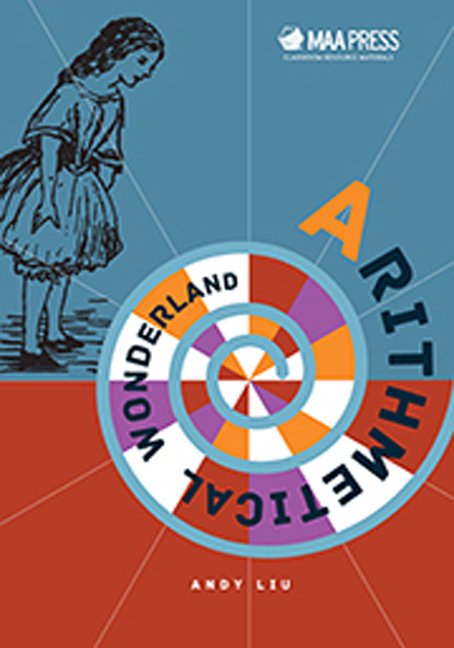Book contents
- Frontmatter
- Contents
- Preface to a Preliminary Edition
- Introduction
- 0 Review of Arithmetic
- 1 Divisibility
- 2 Congruence
- 3 Common Divisors and Multiples
- 4 Linear Diophantine Equations
- 5 Prime Factorizations
- 6 Rational and Irrational Numbers
- 7 Numeration Systems
- Appendix A Legacy of Martin Gardner
- Solution to Odd-numbered Exercises
- Index
- About the Author
0 - Review of Arithmetic
- Frontmatter
- Contents
- Preface to a Preliminary Edition
- Introduction
- 0 Review of Arithmetic
- 1 Divisibility
- 2 Congruence
- 3 Common Divisors and Multiples
- 4 Linear Diophantine Equations
- 5 Prime Factorizations
- 6 Rational and Irrational Numbers
- 7 Numeration Systems
- Appendix A Legacy of Martin Gardner
- Solution to Odd-numbered Exercises
- Index
- About the Author
Summary
“How much basic education do you boys have?” Alice asked the twins.
“Not much,” said Tweedledum.
“Just the three Rs,” said Tweedledee, “Reeling, Writhing and Arithmetic.”
“So you have had some physical education,” said Alice, looking at the boys’ rotund bodies, “but you are not in shape.”
“We are in shape,” the twins protested together, “even though you may not like the shape we are in.”
“Oh dear,” said Alice, “it makes me wonder about how much arithmetic you have studied.”
“Just the four basic operations,” said Tweedledum.
Tweedledee elaborated, “Ambition, Distraction, Uglification and Derision.”
“What in the name of heaven are these?” exclaimed Alice. “You boys must start all over again. I will teach you some proper arithmetic.”
“We are listening,” said the twins.
Counting Numbers
“Let us start with the very basic. Can you boys count?”
“Of course,” said Tweedledum.
Tweedledee said, “Zero, one, two, three, four, five, six, seven, eight, nine, ten, eleven, twelve, and so on.”
Alice said, “Very good. These are the counting numbers. We use the Hindu-Arabic symbols 0, 1, 2, 3, 4, 5, 6, 7, 8, 9, 10, 11, 12, and so on.”
“Why is each of ten, eleven and twelve represented by two symbols while each of the others is represented by only one symbol?” asked Tweedledum.
“A very good question,” said Alice. “We cannot have a single symbol for each number, as otherwise we will need infinitely many symbols to represent all the numbers. So we settle for a finite number of symbols, and represent larger numbers with more of the same symbols. We call a single symbol a digit. How many different digits are there?”
“Ten,” said Tweedledee, “namely, 0, 1, 2, 3, 4, 5, 6, 7, 8 and 9.”
“Very good,” said Alice. “We probably settle for ten digits because we have ten fingers that we often use for counting. The word digit does mean fingers, or toes.”
“Why is ten represented by 10?” asked Tweedledum. “Ten is not equal to one plus zero.”
- Type
- Chapter
- Information
- Arithmetical Wonderland , pp. 1 - 26Publisher: Mathematical Association of AmericaPrint publication year: 2015



